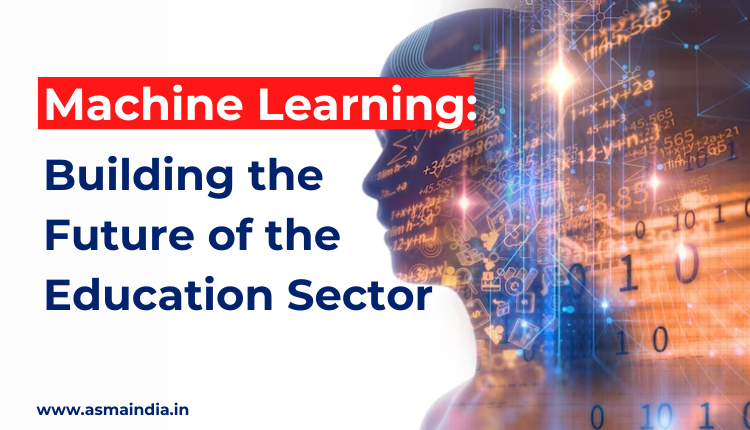Machine Learning: Building the Future of the Education Sector
Machine learning is a type of artificial intelligence that enables computers to learn and improve from experience without being explicitly programmed. It has numerous applications in various fields, including education. Machine learning can be used to improve education by helping educators to better understand student behavior, personalize learning experiences, and develop more effective teaching strategies. This article will explain how we can best use machine learning to improve student performance and learning experiences. It also reveals the top 5 machine learning tools that will certainly help universities or institutes improve the overall learning and interaction process.
Top Benefits of Using Machine Learning in Education
- Personalize Learning
One of the main benefits of machine learning in education is its ability to provide personalized learning experiences for each student. By analyzing data on each student’s learning history, machine learning algorithms can identify patterns and predict what topics they may struggle with, which areas they may excel in, and what type of content or activities they may find most engaging. This allows educators to tailor instruction and support to meet the unique needs of each student.
A survey by McGraw-Hill found that 71% of students felt that adaptive learning, which uses machine learning, helped them learn better and improved their grades.
A report by MarketsandMarkets found that the market for adaptive learning, which uses machine learning to personalize instruction, is expected to grow from $1.36 billion in 2018 to $3.16 billion by 2023, at a CAGR of 18.8%.
-
Risk Assessment
Another way machine learning can improve education is by helping educators to identify at-risk students who may be struggling academically or emotionally. By analyzing data on student behavior, attendance, and academic performance, machine learning algorithms can detect patterns and flag students who may need extra support or intervention. This allows educators to provide targeted interventions and support to students before they fall too far behind.
A survey by EdTech Digest found that 92% of educators believe that technology, including machine learning, will have a major impact on education in the next five years.
-
Teaching Strategies
Machine learning can also be used to develop more effective teaching strategies. By analyzing data on student performance and behavior, machine learning algorithms can identify which teaching methods and strategies are most effective for different types of learners. This information can be used to develop more effective teaching materials and methods that are tailored to the specific needs of each student.
Top 5 Machine Learning Tools for Education
There are several tools available that are exploring machine learning to enhance the learning experience for students. The data processing and analytical abilities that analyse the behavioural intelligence of students and provide relevant solutions to improve the education ecosystem.

Founded: 2014
Location: Fully Remote
Mainstay wants to improve digital conversations between students and academic staff by adding behavioural intelligence to AI-powered responses. Responses are based on research that takes into account things like cultural context and levels of sensitivity. These features have made it easier for AI to connect students with relevant resources and determine when it’s best to escalate a conversation to teachers, admissions counsellors, or other appropriate personnel.

Founded: 2012
Location: Fully Remote
Datawrapper is a user-friendly, open-source software tool that is ideal for the creation of interactive charts, graphs, maps, etc. from the heap of data in a fast manner. It helps data scientists in extracting the maximum value out of data that can be availed in any machine learning model. The charts and maps that are availed can be embedded into websites. A variety of charts like pie charts, bar charts, line charts, etc. can be created. It does not need detailed knowledge about programming or coding.

Founded: 2020
Location: San Ramon, California
Riiid Labs offers students what it refers to as a “Exponential Learning Experience” by integrating AI and machine learning technologies into the classroom. Through the delivery of micro-interval assessments and the observation of testing behaviors, the company’s platform gathers data. Then, it makes use of its AI Tutor and AI Coach to provide in-depth assistance and timely encouragement, ensuring that students remain interested in and retain knowledge throughout the learning process.

Founded: 2005
Location: San Francisco, California
Users of the online study tool Quizlet can make their own quizzes, flashcards, and diagrams or use pre-made ones. The business uses its data on users and user content along with analytics and machine learning to determine how students might study more successfully. The Learning Assistant Platform, which recognises phrases that students struggle with and gives them priority in subsequent study sessions, is one solution that emerged from this research.

Founded: 2013
Location: Fully Remote
Every student follows a different path through their education, and Century’s learning platform recognises this reality. Students start by completing diagnostic tests, which highlight areas for improvement and learning gaps. In order to prevent students from forgetting what they have already learned, CENTURY’s AI-powered features then suggest topics that each student needs the most assistance with.
Overall, machine learning has the potential to revolutionize education by providing personalized learning experiences, identifying at-risk students, and developing more effective teaching strategies. However, it’s important to note that machine learning is not a magic solution and should be used in conjunction with other teaching methods and strategies. Additionally, privacy concerns around student data and the potential for algorithmic bias are important considerations that must be addressed.



